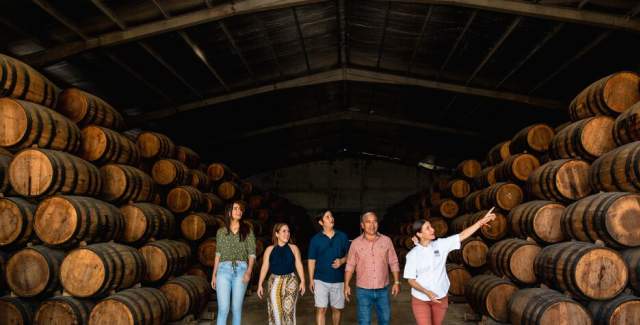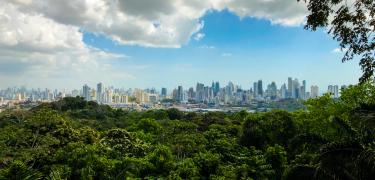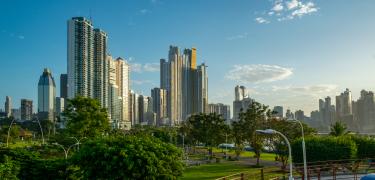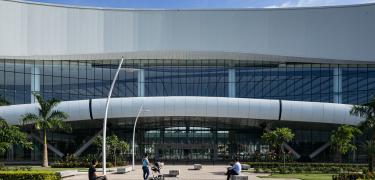Herrera
Herrera, the smallest of Panamá’s provinces, is affectionately known as “the land where no one is a stranger.” The residents are unfailingly kind and helpful with a joyous attitude. The area is steeped in history and tradition. It has the distinction of having exported its culture to all of Panamá, giving cultural unity to the entire country.
The tiny province sits at the northern tip of the Azuero Peninsula, between Veraguas and Los Santos. It consists of a small section of Pacific coastline and a large agricultural interior. Having a moderate climate, and the usual two seasons—dry and rainy—temperatures are pleasantly around 24-28C when it’s rainy and slightly hotter, about 28-30C, when it’s dry.

Things to Do
Nature lovers and environmentalists will find plenty of things to do in Herrera. Along the coast lies the well-known mudflats and mangroves at Playa El Agallito, a huge feeding ground for thousands of migratory birds in all their brilliant many-hued plumage. On the opposite end of the geographic spectrum is Sarigua National Park, a pre-Columbian site that dates back 11,000 years and is the driest region of Panamá—in fact, it’s the only desert in Panamá.
When it comes to cultural pursuits, an interesting day can be enjoyed in the province’s capital, Chitre, visiting the traditional handicraft markets displaying colorful garments and crafts in all their traditional splendor and craftsmanship. The La Arena region, about 10 minutes from the city center, is known for its artisan bread and pastries, so be sure to stop by a panaderia for a treat. Situated in the northeast corner of Herrera, Chitre offers all the services of any large city including hotels, restaurants, banks, and shopping. From picturesque boutique hotels to hostels and family-friendly accommodations, there are places to stay for every type of traveler.
While in Herrera, spend some time in the small towns that are big on local pride. Ocú, an interior city near the opposite border from Chitre, is known for its hat making. To this day it is possible to take a tour of this intricate, straw hat weaving industry where you can buy directly from home weavers. The small colonial district of Parita is a picturesque and historical Spanish pueblo. Most of the architecture is from the 18th century and its Old World charm is proudly upheld by its residents.
Before you leave, make sure to taste the national drink, seco. Herrera ranks third in sugarcane production in Panamá, and seco is a spirit made from this local export. The Hacienda San Isidro distillery where the drink was first produced is still operating and open for tours. This distillery is also the home of Ron Abuelo, and visitors can even try a rum that has been aging for 100 years.
Cultural and religious festivals are avidly and enthusiastically celebrated in Herrera. Their version of the yearly Carnival, held in Chitre before the start of Lent in February or March, is widely recognized as one of the most exciting in Panamá. For vivid colors, pulse-pounding music, and elaborate costumes, Carnival is the place to be, so you may want to keep the dates in mind when you’re planning your trip!

Getting There
From Panama City, you can depart from the Albrook bus terminal in Panama City and arrive in Chitre in approximately five hours. By car, the trip takes three hours and 30 minutes.






